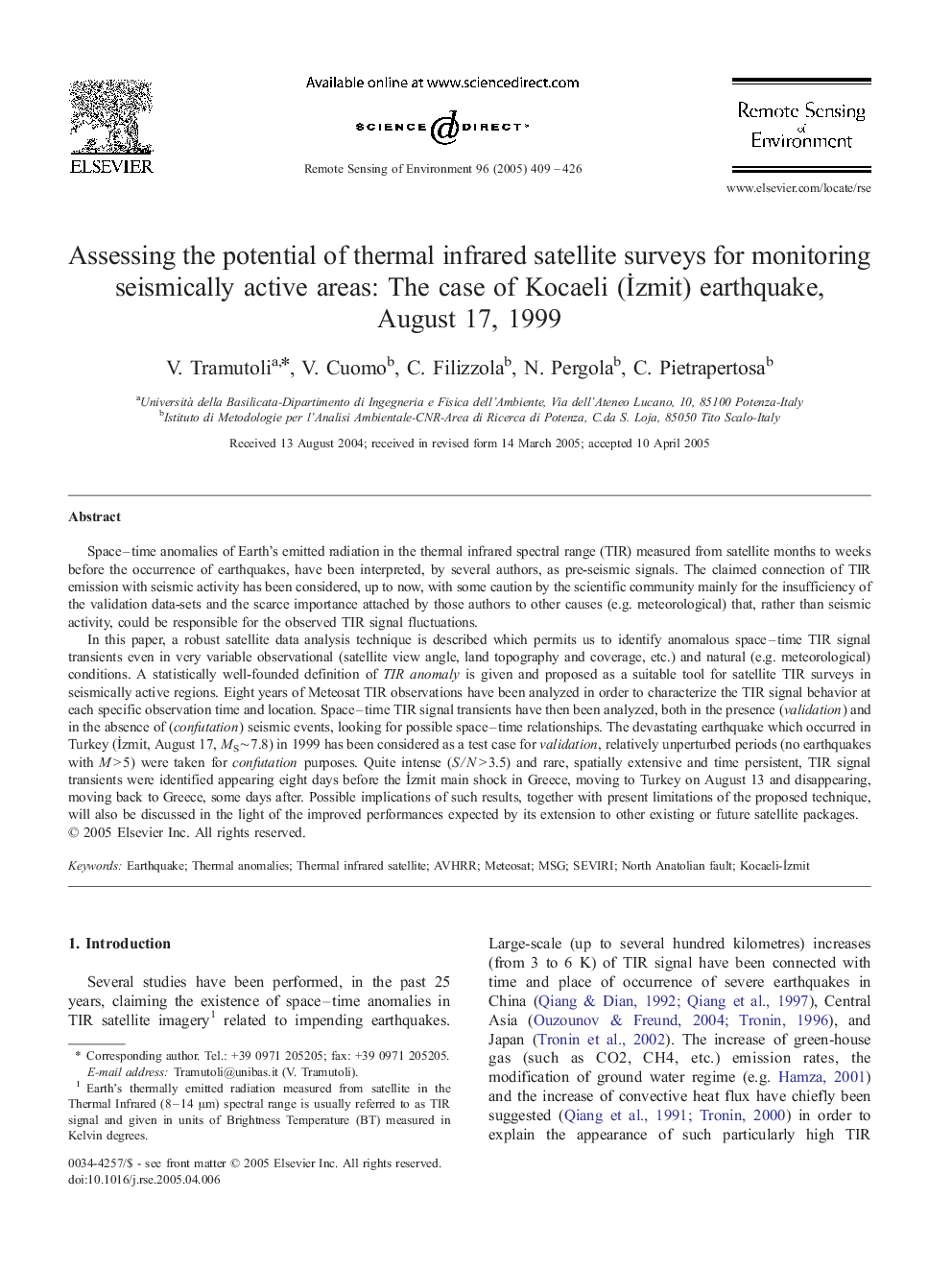| Article ID | Journal | Published Year | Pages | File Type |
|---|---|---|---|---|
| 10114203 | Remote Sensing of Environment | 2005 | 18 Pages |
Abstract
In this paper, a robust satellite data analysis technique is described which permits us to identify anomalous space-time TIR signal transients even in very variable observational (satellite view angle, land topography and coverage, etc.) and natural (e.g. meteorological) conditions. A statistically well-founded definition of TIR anomaly is given and proposed as a suitable tool for satellite TIR surveys in seismically active regions. Eight years of Meteosat TIR observations have been analyzed in order to characterize the TIR signal behavior at each specific observation time and location. Space-time TIR signal transients have then been analyzed, both in the presence (validation) and in the absence of (confutation) seismic events, looking for possible space-time relationships. The devastating earthquake which occurred in Turkey (Ä°zmit, August 17, MSâ¼7.8) in 1999 has been considered as a test case for validation, relatively unperturbed periods (no earthquakes with MÂ >Â 5) were taken for confutation purposes. Quite intense (SÂ /Â NÂ >Â 3.5) and rare, spatially extensive and time persistent, TIR signal transients were identified appearing eight days before the Ä°zmit main shock in Greece, moving to Turkey on August 13 and disappearing, moving back to Greece, some days after. Possible implications of such results, together with present limitations of the proposed technique, will also be discussed in the light of the improved performances expected by its extension to other existing or future satellite packages.
Related Topics
Physical Sciences and Engineering
Earth and Planetary Sciences
Computers in Earth Sciences
Authors
V. Tramutoli, V. Cuomo, C. Filizzola, N. Pergola, C. Pietrapertosa,
